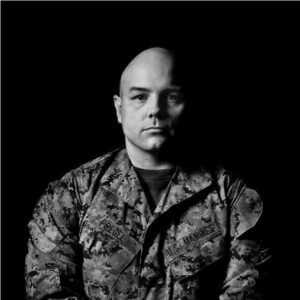Every August and September, millions of families across the U.S. go through the familiar back-to-school routine: shopping for supplies, snapping first-day photos, and setting new schedules. But alongside the excitement, there’s a sobering undercurrent that’s hard to ignore: the concern for children’s safety in the place they should be most secure: school.
It’s a conversation that’s grown louder in recent years. Parents ask, “Is my child’s school doing enough to keep them safe?” Teachers wonder, “Would I recognize the signs of trouble before it’s too late?” And law enforcement officers consider, “How can we intervene before tragedy strikes?”
The truth is, school safety is not the responsibility of one group alone. It’s a layered, interconnected effort creating a chain in which every link matters. If one part weakens or fails to act, an opportunity for prevention can be lost.
The U.S. Secret Service’s Averting Targeted School Violence report, which studied 67 averted school attack plots, makes this clear: in nearly every case, there were multiple warning signs, and multiple people saw them. The difference between a tragedy and an averted disaster often came down to whether someone recognized the danger and took action.
So, who’s responsible for keeping violence out of schools? The answer is everyone: students, parents, educators, law enforcement, and policymakers. Let’s break down each role and the specific steps that can save lives.
Students spend more time with each other than any adult ever could. They’re the first to notice a classmate’s mood shift, hear unsettling comments, or witness behavior that raises red flags. According to the Secret Service report, in many cases, it was friends, peers, or classmates who first became aware of an attack plot.
Why their role matters:
According to the study conducted by the U.S. Secret Service, these plots to commit violence were “most often observed by the plotters’ friends, classmates, or other peers,” making up 69% of the cases studied. Peers often see what adults can’t, such as private social media posts, text messages, or direct statements about wanting to cause harm. Unfortunately, the report found that in some cases, students noticed warning signs but didn’t report them, sometimes out of fear of retaliation or because they assumed it wasn’t serious.
Steps students can take:
Parents and guardians have the unique vantage point of seeing their child’s behavior in an unfiltered, home environment. Eight of the 67 plots in the study were discovered because family members recognized troubling behavior and alerted authorities.
Why their role matters:
Warning signs can appear outside of school: stockpiling weapons or ammunition, researching mass attacks, or making threats at home. Parents may also notice withdrawal, fixation on violent topics, or increased secrecy about online activity.
Steps parents can take:
Teachers, administrators, counselors, and school staff see students in structured, day-to-day environments where changes in behavior or performance can be observed over time.
Why their role matters:
The study found that many schools already had some type of reporting system — but not all did. Those with multidisciplinary threat assessment teams (involving educators, mental health professionals, and law enforcement) were better positioned to act quickly and appropriately.
Steps schools can take:
School Resource Officers (SROs) and local police are not just responders after a crime occurs. They’re vital partners in prevention. In nearly one-third of the cases studied, an SRO either received the first report of a plot or played a direct role in stopping it.
Why their role matters:
When officers build trust with students, they become a safe, approachable point of contact. They also provide the law enforcement perspective on threat assessment teams, helping schools gauge risk and coordinate responses.
Steps law enforcement can take:
From local school boards to state legislatures, policymakers shape the resources and frameworks available to schools and law enforcement.
Why their role matters:
Without funding and supportive laws, even the best prevention strategies can’t be implemented effectively. Policymakers determine whether schools can afford mental health counselors, SROs, and robust reporting systems.
Steps policymakers can take:
The data found in the U.S. Secret Service report tells us something powerful: in every averted attack, prevention worked because multiple people played their part. Students spoke up, parents acted, educators intervened, law enforcement investigated, and sometimes policymakers’ prior investments made it possible to respond quickly.
But the opposite is also true. In attacks that were not prevented, there were often missed chances. Someone saw something but didn’t say something. A tip was received but not acted on. A weapon was accessible when it shouldn’t have been.
As we send our children back to school this year, we can’t afford to let those opportunities slip away. Safety isn’t a one-time checklist; it’s an ongoing commitment from all of us.
The call to action is simple but urgent:
When everyone sees themselves as part of the safety network, the chain becomes unbreakable — and that’s when prevention becomes not just possible, but probable.
Jim served as a Sheriff’s Deputy in Illinois for 30 years. During his time as a Deputy, Jim served on the SWAT team as an operator, team leader and Commander. Jim was involved in several barricaded gunman/hostage incidents as well as service of high risk arrest and search warrants.
Jim was a member of the US Marshals Great Lakes Regional Fugitive Task Force where he performed surveillance and fugitive apprehension. His team was responsible for thousands of high risk felony fugitive arrests. Jim also served in the patrol division where he earned the rank of Sergeant and was responsible for patrol operations. Jim received numerous awards throughout his career to include Deputy of the Year, medal of valor and unit citation for SWAT operations.
Jim was a state certified CQB (Close Quarter Battle) SWAT instructor as well as an Active Shooter Response instructor, providing training for multiple law enforcement agencies throughout the state of Illinois.

I’m a proven leader with a diverse background in defense, law enforcement, and emergency response. My career began as a Scout Sniper in the U.S. Marine Corps, where I earned the Navy and Marine Corps Commendation Medal. I then served as a security contractor in Afghanistan and Iraq, further developing my tactical and crisis management skills.
Domestically, I served as a Deputy for the Greenville County Sheriff’s Office, earning a Medal of Valor, and as a firefighter, where I was awarded a Life Saving Ribbon. These roles reflect my commitment to safety and service, demonstrating leadership under pressure and a passion for protecting others.
As part of the Proactive Response Group Team, I design and deliver comprehensive medical training, developing lesson plans and conducting hands-on sessions. I ensure that participants are equipped with essential medical skills, fostering a culture of continuous improvement and readiness. My role is vital in preparing our team to handle medical emergencies confidently and competently.
Email: jpregel16@gmail.com
Phone: 720-382-3184
LinkedIn: https://www.linkedin.com/in/james-pregel-67765451/
Chris is a retired Major from the Greenville County Sheriff’s Office in South Carolina. Chris was third in command over operations, overseeing more than 300 sworn Deputies as well as all special teams within the Sheriff’s Office. In 2012, Chris helped to organize a Dignitary Protection Team within the Sheriff’s Office that assisted the Secret Service with Presidential and Vice Presidential visits throughout the state. In addition to his normal duties, Chris performs private security for dignitaries, celebrities, as well as 12 years with the Miss America Organization. Chris has been instructing Active shooter Response with ProActive Response Group since 2021.
In his down time, Chris enjoys time with his wife and daughter, as well as watching sports and fishing.
Email: ctaylor@proactiverg.com
Phone: 864-979-0978
LinkedIn: https://www.linkedin.com/in/chris-taylor-331b00150/
Tyrie Fowler is an Active Shooter Response instructor at Proactive Response Group and an Emergency Medicine Trauma Nurse at Prisma Health in Greenville. A Greenville native, Tyrie earned his Exercise Science degree from the University of South Carolina and his nursing degree from Mary Black School of Nursing. He joined Greenville Health System in 2015, transitioning from Orthopedic Trauma to Emergency Medicine. At Prisma Health, a Level One Trauma Center, he is part of the Trauma Nurse Leader team, with training in Advanced Trauma Care (ATCN) and Tactical Emergency Casualty Care (TECC). Tyrie is pursuing certifications in Emergency Nursing (CEN) and Trauma Certified Registered Nurse (TCRN).
Tyrie enjoys Fall for its long runs, college football (Go Gamecocks!), and hunting, including deer and quail. He also loves smoking recipes with a creative twist. As a medical instructor, Tyrie empowers bystanders to provide critical assistance in emergencies, teaching them to control bleeding and manage injuries, ensuring they leave his class confident in making a difference.
Steven J. Anderson is currently an Active Shooter Response Instructor for ProActive Response Group; he enjoys empowering people to survive in life threatening situations. Steve grew up in central Minnesota and spent three years with the United States Army. He graduated from St. Cloud State University with a degree in Criminal Justice. Steve worked as a federal agent for the United States Border Patrol where he was a member of the U.S. Border Patrol Tactical Unit (BORTAC): completing multiple assignments in Central & South America, an assignment with the United Nations and the Deputy Director (A) of the National Air Security Operation Center. In 2020 he retired from working in Federal Law Enforcement.
In his spare time he enjoys the outdoors especially bow hunting. Steve is a proud husband and father to 3 wonderful daughters.
Rob is originally from Louisville, CO. He joined the U.S. Marine Corps in 2003 and served as a Combat Engineer Officer until 2012. Rob deployed in support of Operation Enduring Freedom in 2009 and 2010 where he planned and implemented force protection strategy, counter improvised explosive device operations, and mobility operations for Third Battalion Sixth Marine Regiment and Third Battalion Seventh Marine Regiment . Upon his departure from the military, Rob began to teach firearms and tactics with Arizona based Alpine Arms while simultaneously running his own small residential security consulting firm. Rob relocated the South Carolina in 2021 and joined ProActive Response Group in early 2023.
When not working Rob spends time with his wife Lindsey and son Theo. He enjoys stand up paddle boarding, visiting the rifle range, four wheeling, and camping.
Phone: 720-382-3184
LinkedIn: https://www.linkedin.com/in/robert-christian-29579649/
Andy Sexton spent 12 years with the Greenville County Sheriff’s office in South Carolina, where he held the rank of Uniform Patrol Sergeant. His experience includes serving as an assistant SWAT team leader, involvement in high-risk incidents, including hostage rescues and the protection of dignitaries, working in criminal investigations (including armed robbery and homicide), and serving on the training committee for the Greenville County Sheriff’s Office.